Nikon D40 with AF-S Nikkor 18-55mm 1:3.5-5.6 G II ED
-
-
Written by Gordon Laing
Nikon D40 sensor
Lenses and viewfinder / Screen and menus / Sensor and processing
Nikon D40 features
Lenses and viewfinder / Screen and menus / Sensor and processing
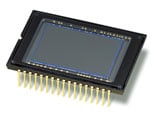 |
The Nikon D40 is equipped with the same 6.1 Megapixel sensor as the earlier D50. This measures 23.7×15.6mm and conforms to Nikon’s DX format; hence any lenses you attach effectively have their field of view reduced by 1.5 times. So the bundled 18-55mm Nikkor lens delivers a field of view equivalent to 27-83mm on a 35mm film camera.
Sensitivity is offered from 200 to 1600 ISO in single EV steps with an extended HI1 option providing an equivalent of 3200 ISO. Noise reduction can be applied for higher sensitivities or longer exposures, but by default it’s switched off. Since most D40 owners will leave it at its default settings, we tested it as such, although have included examples with and without noise reduction in our Noise results pages.
Nikon D40 image quality settings
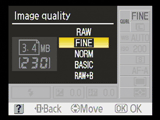 |
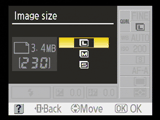 |
|
The D40’s maximum image size measures 3008×2000 pixels, which is sufficient for making great-looking 10x7in prints at 300dpi, or inkjet prints at larger sizes. 10 Megapixel models like the D40x and D80 have an advantage of 864 more pixels horizontally and 592 pixels vertically, which allows them greater latitude for cropping or the ability to be enlarged by around a further 3.5in diagonally. Clearly this gives 10 megapixel models an advantage, but since most people rarely print bigger than 10x8in, nor expect the biggest possible print from crops, the D40’s resolution should be sufficient for the vast majority of situations.
The D40 additionally offers two lower resolution modes, along with the choice of three different JPEG compression options; best quality JPEGs measure around 2.5MB each. There’s also a RAW option with or without a JPEG, although the latter is only recorded with the basic quality setting. RAW files by themselves measure around 5.6MB each.
As with other Nikon DSLRs, the D40’s supplied with Nikon’s Picture Project software which can convert but not adjust RAW files. While Canon still has the edge here by supplying its more flexible Digital Photo Professional software with all its DSLRs, you can at least say D40 owners are less likely to miss RAW processing software than those buying, say, a D80 or D200.
If you do want more options when converting RAW files you’ll need to invest in software like Nikon’s own CaptureNX or Adobe Photoshop CS2. Note despite using an older sensor, you’ll still need an up-to-date version of Adobe Camera RAW to support the D40’s NEF files; it’s supported in version 3.7 onwards.
Nikon D40 colour and white balance
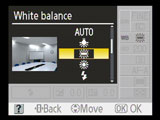 |
Along with Auto and manually preset white balances, the D40 offers separate Incandescent, Fluorescent, Direct Sunlight, Flash, Cloudy or Shade options, each accompanied by an example image of where or how you might use them.
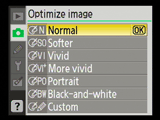 |
Like recent Nikon DSLRs, sharpening, tone, colour, hue and saturation settings are applied using a variety of Image Optimisation presets. These include Normal, Softer, Vivid, More vivid, Portrait, Black and white, and Custom for your own choices. Colour space can be switched between two sRGB options along with Adobe RGB.
We used the default Normal preset for our Results and Gallery pages and like earlier Nikon DSLRs, found it produced consumer-friendly vibrant JPEGs out of the camera, which are ideally suited to first-time DSLR owners and those upgrading from a compact. If you find them too sharp or vibrant, you can easily choose alternative presets or adjust your own from the custom mode.
Nikon D40 continuous shooting
Nikon quotes a continuous shooting speed of 2.5fps, dropping to around 1.7fps with noise reduction enabled or 1fps with the sensitivity set to HI1 (3200 ISO). Using a SanDisk Ultra II 1GB SD memory card we set the D40 to continuous shooting and fired off 50 best-quality JPEG frames in 19 seconds, corresponding to a slightly quicker-than-quoted rate of 2.63fps.The camera also seemed happy to keep shooting at this rate until we ran out of memory. Note the new D40x has a slightly quicker continuous shooting rate of 3fps, matching the Canon EOS 400D / XTi.





